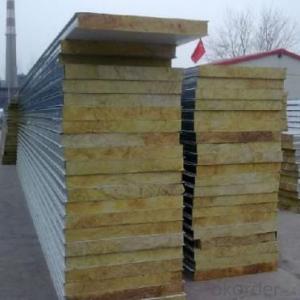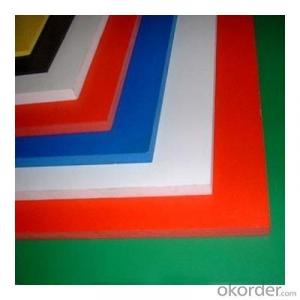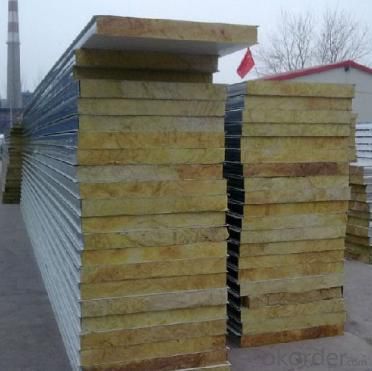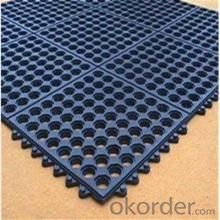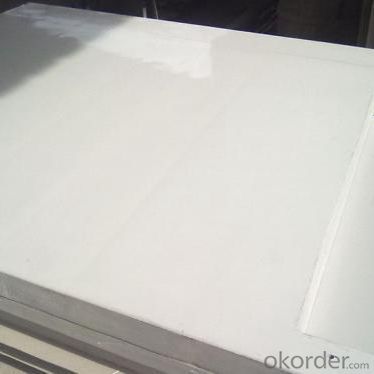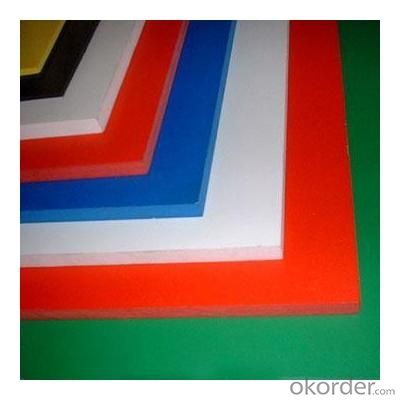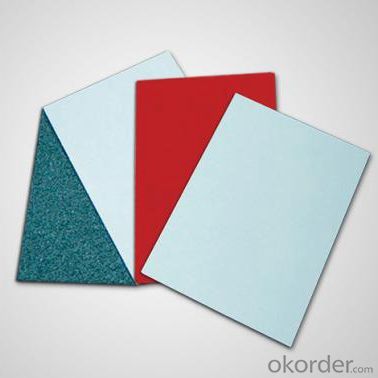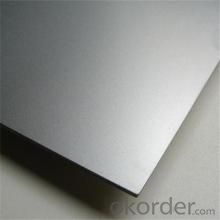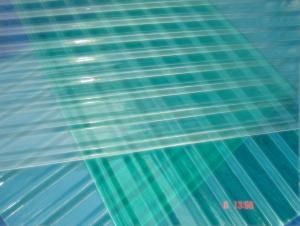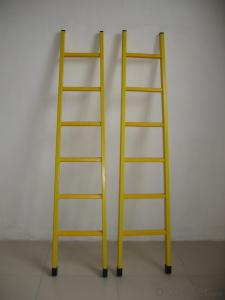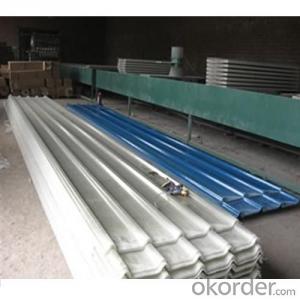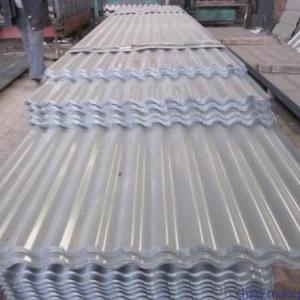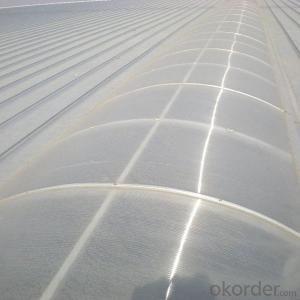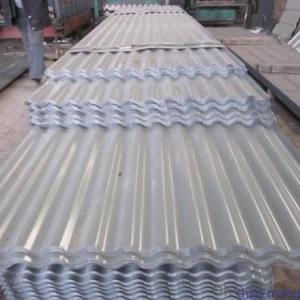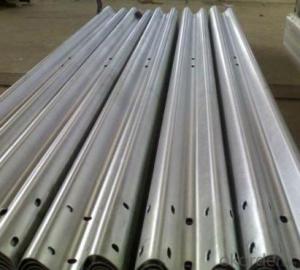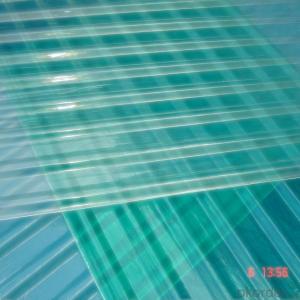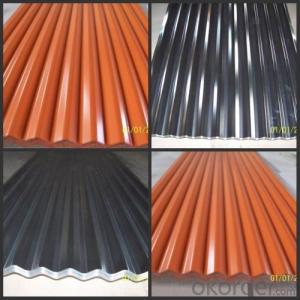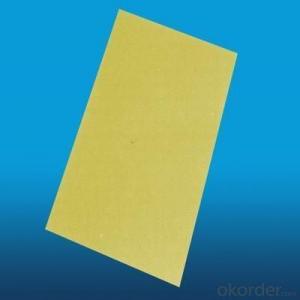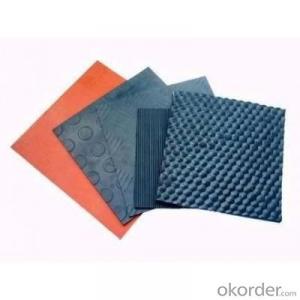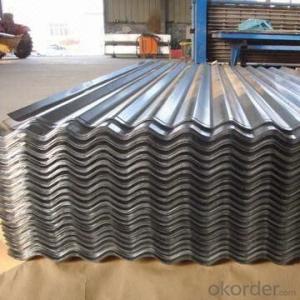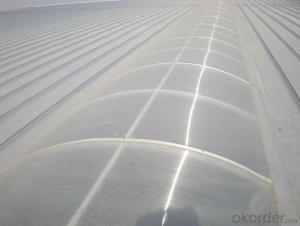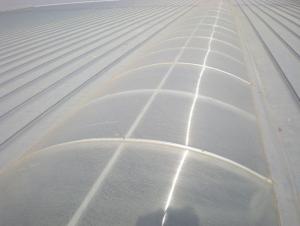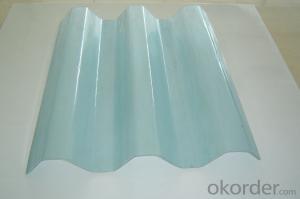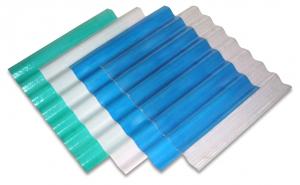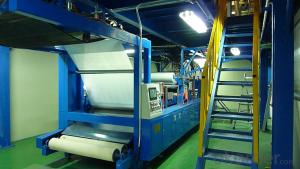FRP Roofing Panel - Custom Design FRP Corrugated Semi-Transparent Roof
- Loading Port:
- Tianjin
- Payment Terms:
- TT OR LC
- Min Order Qty:
- 300 m
- Supply Capability:
- 60000 m/month
OKorder Service Pledge
OKorder Financial Service
You Might Also Like
Specification
PRODUCT DESCRIPTION
equipment is FRP continuous molding machine, unit mix of resin, fiber Wall to Wall thickness control, process regulation, curing, cutting, cleaning consisting of several parts. The production capacity can reach 2,500 meters. The accuracy of the equipment reached the advanced level, while the advanced production technology to ensure product quality and stability.
FEATURES
1.Light transmission rate of 80%
2.Anti-aging
3.good corrosion resistance
4.excellent toughness
5.used in -60°c to 100 °c
6.Thickness:0.8-2.5mm
7.length:Customized
8.Excellent water resistance
9.Impact resistance
SPECIFICATIONS
| Name: | Custom Design FRP Corrugated Semi-Transparent Roof |
| Material: | Protective film, Unsaturated resin polyester, Fiberglass |
| Weight: | 1800g/2400g/2750g/3050g Square meter |
| Thickness: | 0.8~3.0mm |
| Length: | Customized |
| Temp: | used in -40°c to 140 °c |
| OEM: | Welcomed |
| Color: | Clear/Blue |
PICTURES
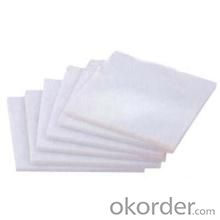
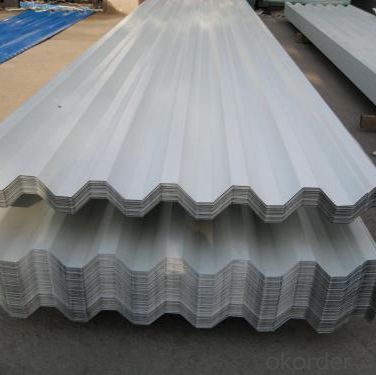
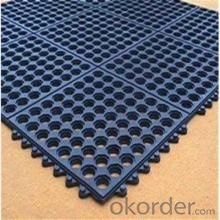
- Q: Can FRP roofing panels be used in retail or commercial buildings?
- FRP roofing panels are suitable for use in retail or commercial buildings. These panels are renowned for their sturdy nature, lightweight structure, and exceptional ability to resist corrosion and weathering. These features make them ideal for commercial purposes where durability is crucial. Moreover, FRP panels can be produced in different colors and designs, allowing for customization to match the aesthetic needs of retail or commercial buildings. They are also relatively simple to install and upkeep, making them a cost-efficient roofing choice. In conclusion, FRP roofing panels offer a dependable and appealing solution for retail and commercial buildings.
- Q: Are FRP roofing panels resistant to scratching or abrasion?
- Yes, FRP (Fiberglass Reinforced Plastic) roofing panels are generally resistant to scratching or abrasion. The fiberglass reinforcement provides added strength and durability, making them less prone to damage from scratching or abrasion compared to other roofing materials. However, it is important to note that excessive or rough handling can still cause minor scratches or abrasions, so proper care and maintenance are recommended to maintain the longevity of FRP roofing panels.
- Q: Do FRP roofing panels provide sound insulation?
- No, FRP roofing panels do not provide sound insulation.
- Q: Can FRP roofing panels be installed on historical or heritage buildings?
- Yes, FRP roofing panels can be installed on historical or heritage buildings. FRP roofing panels are lightweight, durable, and resistant to corrosion, making them a suitable option for preserving the architectural integrity of historical or heritage buildings. Additionally, FRP panels can be designed to mimic the appearance of traditional roofing materials, ensuring that they blend seamlessly with the building's aesthetic while providing modern performance benefits. However, it is essential to consult with a professional architect or preservationist to ensure that the installation process adheres to any specific requirements or guidelines for historical or heritage buildings.
- Q: Can FRP roofing panels be installed on top of insulation?
- Yes, FRP roofing panels can be installed on top of insulation. In fact, insulation is often recommended as it helps improve the energy efficiency and thermal performance of the roofing system.
- Q: Can FRP roofing panels be installed on top of concrete roofs?
- Yes, FRP (Fiberglass Reinforced Plastic) roofing panels can be installed on top of concrete roofs. FRP panels are lightweight and versatile, making them suitable for various applications, including concrete roofs. The installation process involves preparing the concrete surface, ensuring it is clean, dry, and free from any debris. The panels are then attached to the roof using an adhesive, screws, or a combination of both, depending on the specific requirements and manufacturer's recommendations. It is important to follow the installation instructions provided by the manufacturer to ensure a proper and secure installation. Additionally, FRP roofing panels offer many benefits such as durability, weather resistance, and low maintenance, making them a popular choice for both new construction and retrofit projects.
- Q: Do FRP roofing panels require edge trims or flashing?
- Yes, FRP roofing panels do require edge trims or flashing. These components are necessary to provide a proper seal and protection against water infiltration at the edges of the panels. Additionally, edge trims and flashing help to enhance the aesthetic appearance and overall durability of the FRP roofing system.
- Q: Are FRP roofing panels compatible with different roof drainage systems?
- Indeed, FRP roofing panels can be used alongside a variety of roof drainage systems. With their versatility, FRP panels can be adjusted to function with different types of drainage systems, including gutters, downspouts, and scuppers. Integration of these panels into an existing drainage system or the creation of new drainage installations is a simple task. The customizable nature of FRP ensures smooth incorporation, rendering it an excellent option for diverse roof drainage systems.
- Q: Do FRP roofing panels require any special precautions during installation?
- Yes, FRP (Fiberglass Reinforced Plastic) roofing panels do require special precautions during installation to ensure proper installation and longevity of the roof. Some of the key precautions to keep in mind are: 1. Safety Measures: It is essential to follow appropriate safety precautions during installation. This includes wearing protective gear such as gloves, safety glasses, and a dust mask to prevent any injuries or inhalation of fiberglass particles. 2. Proper Handling: FRP panels are relatively lightweight, but they can be fragile and prone to damage. It is important to handle the panels with care and avoid dropping or dragging them to prevent cracks or breakages. 3. Acclimation: FRP panels should be acclimated to the temperature and humidity conditions of the installation site before installation. This helps prevent any potential warping or dimensional changes that may occur due to expansion or contraction. 4. Temperature Considerations: Installers should be aware of the temperature limitations specified by the manufacturer. Extreme temperatures can affect the integrity and appearance of FRP panels. For example, installing panels in very cold conditions can make them more brittle and prone to cracking. 5. Proper Fastening: FRP panels need to be securely fastened to the roof structure using appropriate fasteners recommended by the manufacturer. It is crucial to follow the recommended fastening pattern and spacing to ensure the panels are properly secured in place. 6. Expansion and Contraction: FRP panels can expand and contract with changes in temperature. To accommodate these movements, it is important to leave adequate space for thermal expansion and contraction during installation. Additionally, using fasteners with some flexibility, such as neoprene washers, can help absorb the movements and prevent stress on the panels. 7. Sealant and Flashing: Proper sealing and flashing are crucial to prevent water infiltration and ensure a watertight installation. Installers should use compatible sealants and flashing materials recommended by the manufacturer to achieve a durable and weather-resistant roof. Overall, following the manufacturer's installation guidelines and recommendations is essential for a successful installation of FRP roofing panels. It is also recommended to consult with a professional roofing contractor for expert advice and assistance to ensure the panels are installed correctly and safely.
- Q: Can FRP roofing panels be used for both residential and commercial skylights?
- FRP roofing panels are indeed applicable for skylights in both residential and commercial purposes. These panels possess remarkable traits such as being lightweight, durable, and having exceptional light transmission capabilities, which render them perfect for skylights in residential and commercial environments alike. They exhibit resistance towards UV rays, weathering, and impacts, thereby guaranteeing enduring performance and reduced upkeep. Furthermore, these FRP panels offer customization options regarding size, shape, and color in order to accommodate various design preferences and meet the precise specifications of any residential or commercial skylight undertaking.
Send your message to us
FRP Roofing Panel - Custom Design FRP Corrugated Semi-Transparent Roof
- Loading Port:
- Tianjin
- Payment Terms:
- TT OR LC
- Min Order Qty:
- 300 m
- Supply Capability:
- 60000 m/month
OKorder Service Pledge
OKorder Financial Service
Similar products
Hot products
Hot Searches
Related keywords
